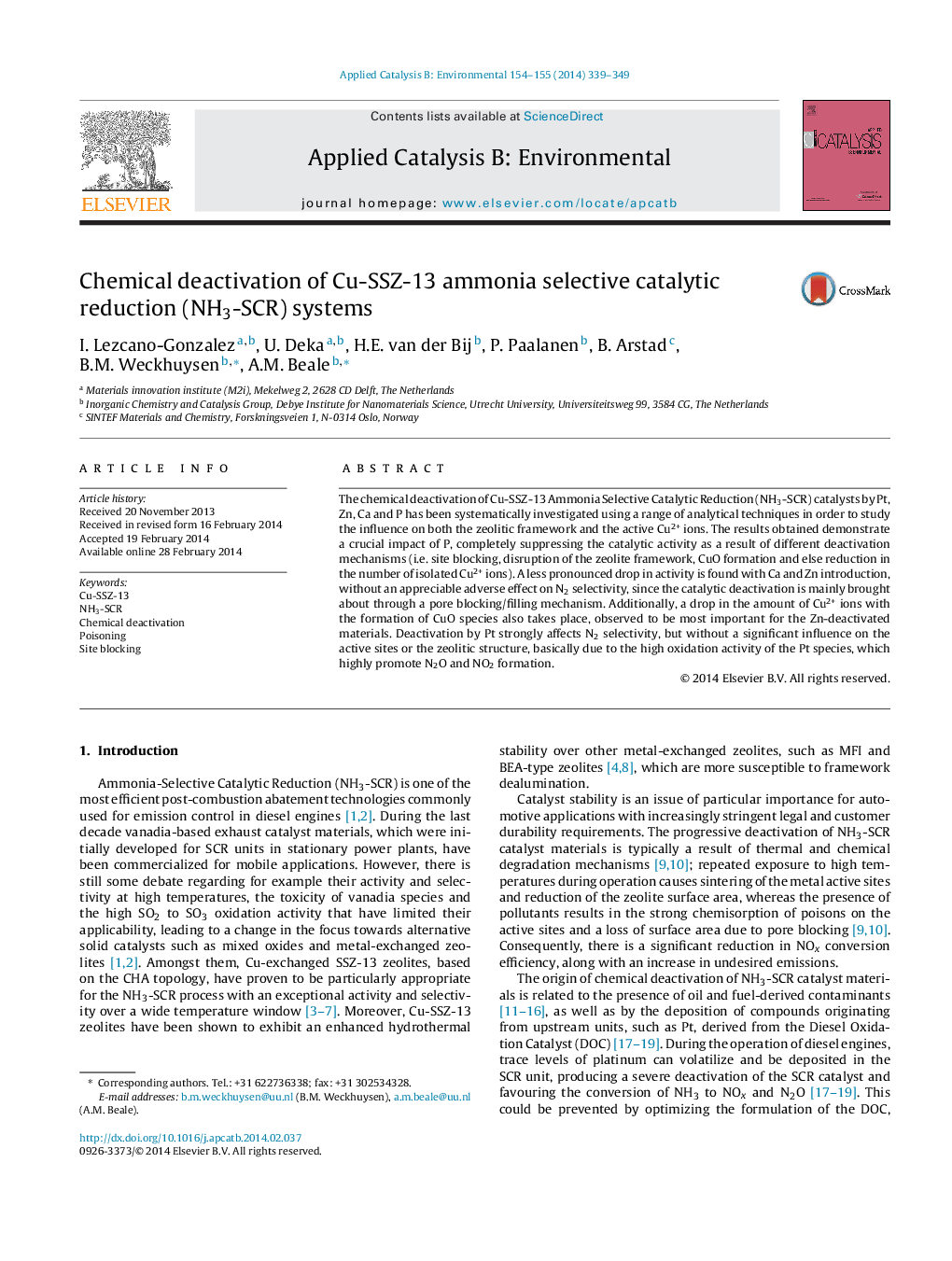| Article ID | Journal | Published Year | Pages | File Type |
|---|---|---|---|---|
| 45072 | Applied Catalysis B: Environmental | 2014 | 11 Pages |
•Pt, Ca, Zn and P have different effects on the catalytic performance of Cu-SSZ-13.•Deactivation by Pt affects N2 selectivity due to the high oxidation activity of Pt.•Deactivation by Zn and Ca affects NOx conversion but with no effect on selectivity.•Deactivation by Zn and Ca lead to pore blocking/filling, along with Cu clustering.•P completely suppresses the activity due to a combination of several mechanisms.
The chemical deactivation of Cu-SSZ-13 Ammonia Selective Catalytic Reduction (NH3-SCR) catalysts by Pt, Zn, Ca and P has been systematically investigated using a range of analytical techniques in order to study the influence on both the zeolitic framework and the active Cu2+ ions. The results obtained demonstrate a crucial impact of P, completely suppressing the catalytic activity as a result of different deactivation mechanisms (i.e. site blocking, disruption of the zeolite framework, CuO formation and else reduction in the number of isolated Cu2+ ions). A less pronounced drop in activity is found with Ca and Zn introduction, without an appreciable adverse effect on N2 selectivity, since the catalytic deactivation is mainly brought about through a pore blocking/filling mechanism. Additionally, a drop in the amount of Cu2+ ions with the formation of CuO species also takes place, observed to be most important for the Zn-deactivated materials. Deactivation by Pt strongly affects N2 selectivity, but without a significant influence on the active sites or the zeolitic structure, basically due to the high oxidation activity of the Pt species, which highly promote N2O and NO2 formation.
Graphical abstractFigure optionsDownload full-size imageDownload as PowerPoint slide
